Top: Wi-Fi Routers for Fiber Optics - Upgrade your 2020 FTTH network
2020 Top FTTH: Wi-Fi Routers for Fiber Optics (Fiber To The Home) Internet Routers
There are many things to take into consideration when choosing a new router because you need to select one that fits the best with your demands and necessities. Are you a gamer or a streamer? Do you live in a big house or a small apartment? Do you have a high or low budget? Don’t worry, because there is a router for everyone.
Option 1: NETGEAR AC1750 Smart Wifi Router

According to www.lifewire.com is the best router to watch your series and movies. It features 450+1300 Mbps speeds and high-power external antennas for improved coverage. It has one USB 3.0 port and one USB 2.0 port and it has the best wireless security with WPA/WPA2. All these characteristics create a more stable connection for voice and HD video.
Plus, it counts with an App that lets your monitor and manages your home network remotely.
Option 2: SYNOLOGY RT 2600 AC

If you are looking to create a fast home network with advanced features, this device is the one for you with 2.53Gbps combined wireless bandwidth to supercharge your network. It also can host more than one broadband connection.
With an external storage device or SD card, this router can become your own cloud server with Synology’s Cloud Station Suite, allowing easy access to your personal files.
Option 3: TP-Link AC1200

This is a low price gadget. TP-Link exposes that its Signal Sustain Technology (SST) can help provide a stronger WiFi signal while handling multiple high-bandwidth applications. It offers an amazing 1.75Gbps of throughput that it's great if you're going to be primarily using the router for just web surfing, reading the news or just to check your email.
It also features four Gigabit Ethernet ports, one USB (2.0) port and detachable antennas.
Option 4: ASUS RT-AC1300
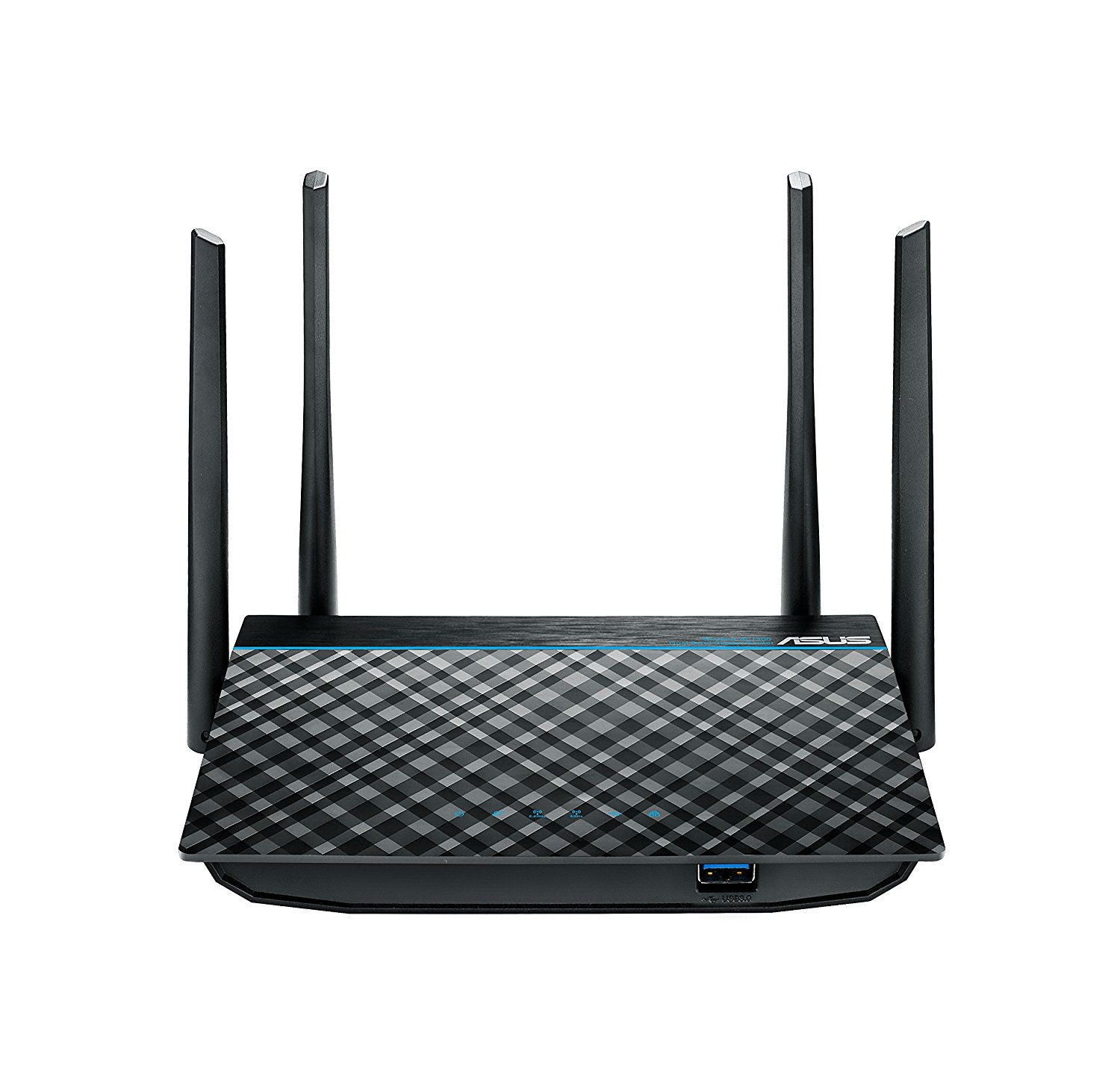
This router fits the best if you live in a small house or apartment and with its lower price it’s even better.
It has four external 5dBi antennas that guarantee you get an excellent range around your place, plus, can use multiple devices (smartphones, speakers, etc.) at the same time. Its speed is up to 1267 Mbps, so no matter what kind of downloads or uploads you throw at it, it can probably manage.
This device works with the ASUS Router App. Available on iOS and Google Play.
Option 5: TP-Link Archer C9-AC1900
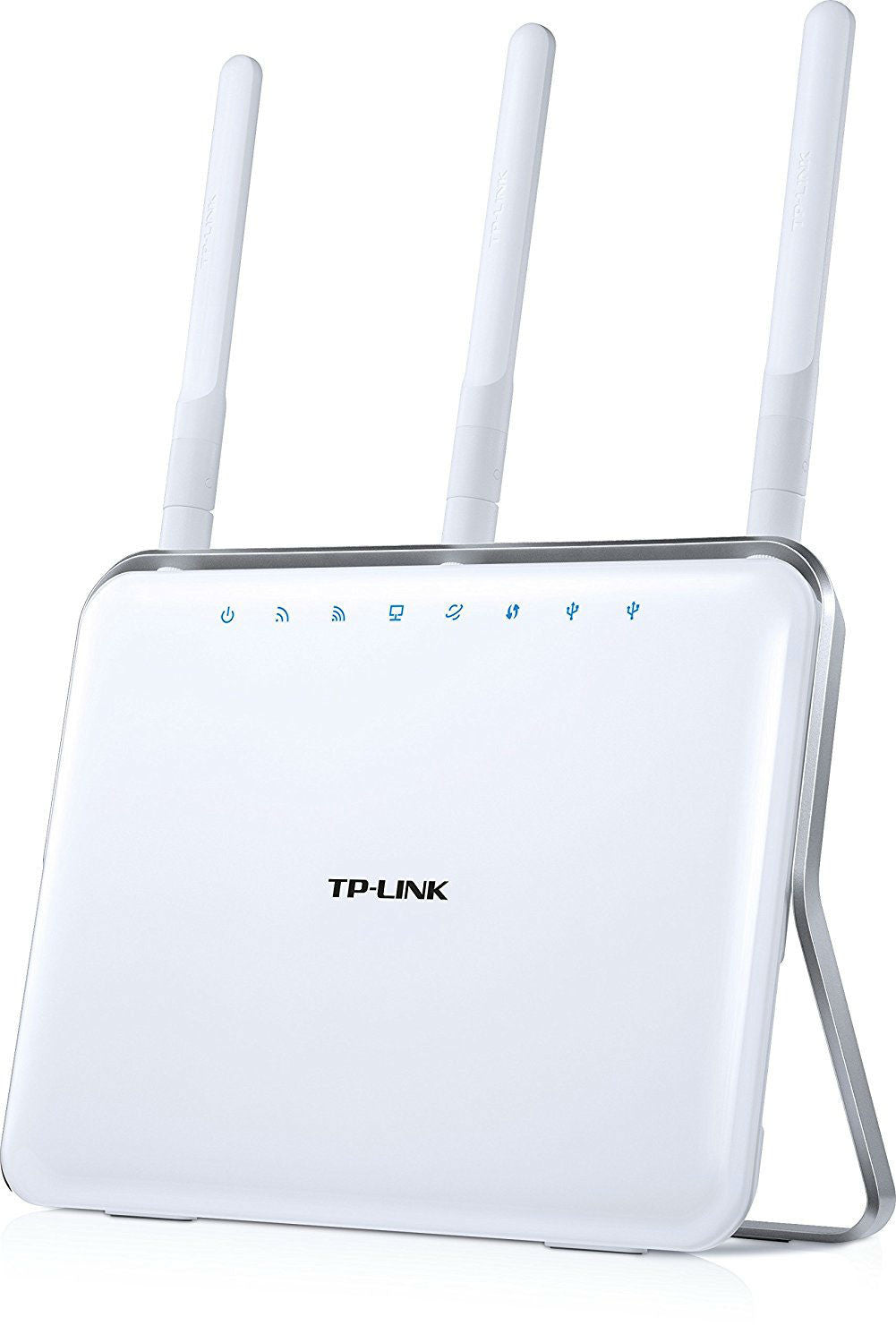
The TP-Link Archer C9-AC1900 comes with 802.11ac support and 1.9Gbps of total available bandwidth. Internally, the AC1900 has a powerful 1GHz dual-core processor that helps handle simultaneous wired and wireless connections without interruptions.
Their three dual band antennas with high-powered amplifiers help to create a strong WiFi signal throughout the home, a USB 2.0 port and a USB 3.0 port.
It is capable of 600Mbit/s transfers over 2.4GHz and 1,300Mbit/s over 5GHz, so your speed connection is in good hands.
After reading all these, which one you will choose? Which one is the best that fit for you? Tell us!
2020 top FTTH routers (Wi-Fi Routers for Fiber Optics)
If you are getting an FTTH plan soon (or already have it), you need to choose a good wireless router that is able to get all the fiber optic speed through. However, you won’t find a router that allows you to directly connect the fiber cable, the chances are your FTTH will be terminated at an Optical Network Terminal (ONT), a simple modem that converts optical signals into Ethernet.
So what you really need is a router that suits your speed requirements with, at least, four gigabit Ethernet ports.
This router is a great selection for a complex network! But don't take our world: check this awesome review from Novaspirit youtube channel:

This router is a little expensive but has impressive features, such as user Multiple Input, Multiple Output (MIMO) technology and offers an amazing performance in both 2.4 Ghz and 5 Ghz according to PC Magazine.
D-Link AC3200 Ultra Wi-Fi Router

It’s a tri-band router that offers amazing speeds and a beautiful design, reaching 600 Mbps on the 2.4 GHz band and 1,300 Mbps on both 5 GHz. It features six antennas that deliver a strong wireless signal reception.
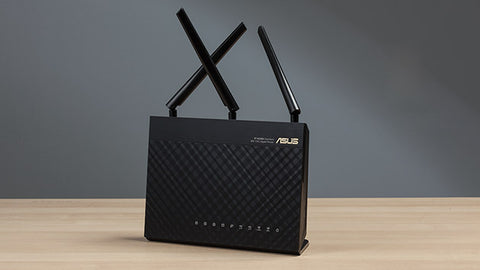
It delivers really fast speeds and it’s suitable for small businesses. Asus RT-AC68U features Parental Control, QoS, and firewall.
Linksys Smart Wi-Fi Router AC 1900
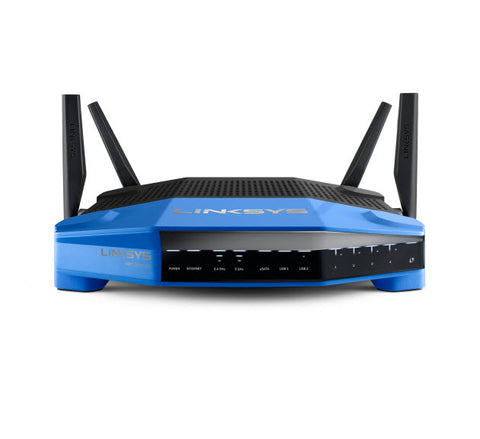
This router offers extraordinary performance speeds, remote access and easy management. It features QoS. Unfortunately, it can’t access to the 5 Ghz band to 802.11ac-only mode, but it has an excellent range at the 2.4. Ghz band.
Netgear Nighthawk X4S Smart Wi-Fi

It offers a solid connection on the 5 Ghz band and Multi-User Multiple Input, Multiple Output. It also features QoS and Parental Control.
| Routers | Asus RT-AC88U | D-Link AC3200 Ultra Wi-Fi Router | Asus RT-AC68U | Linksys Smart Wi-Fi Router AC 1900 | Netgear Nighthawk X4S Smart Wi-Fi |
| Price | $299.99 | $269.99 | $192.36 | $154.99 | $269.95 |
| Specs | Dual-Band Gigabit Router | Tri-band Gigabit Router | Dual-Band Gigabit Router | Dual-Band Gigabit Router | Dual-Band Gigabit Router |
| Data transfer rate | 537Mbps | 558Mbps | 600Mbps | 443Mbps | 491Mbps |
| Total LAN ports | 8 | 4 | 4 | 4 | 4 |
| Wireless Standard | 802.11ac | 802.11ac | 802.11ac | 802.11ac | 802.11ac |
| Dimensions | 3.3 x 11.8 x 7.4 inches | 4.7 x 15.2 x 9.7 inches | 6.0 x 8.0 x 6.3 inches | 1.5 x 7.5 x 6 inches | 1.97 x 11.22 x 7.26 inches |
2015's top FTTH routers
The arrival of fiber optics as a competitor in the global connectivity industry is now a reality. The great advantage of fiber optics is the high velocity at which data transfers as a beam of light inside the cable, reaching speeds far greater than those of a copper wire. With a traditional Ethernet cable (Cat5 or Cat6) the velocity oscillates at around 1,000 Mbps but with the optical fiber, it can reach up to 10,000 Mbps or 1 Gbps. A lot of Wi-Fi routers on the market have fallen in disuse due to the fact that they lack the technical specifications needed for fiber optics.
In order to know what Wi-Fi router is the most adequate, you first have to determine if a change of device is necessary. If the internet connection is an FTTC or FTTP, then a change of router isn’t necessary because even though the ISP uses fiber optics, this is connected to a module which is then connected to the individual home or office by means of traditional coaxial cables. Almost all types of routers available are compatible with these coaxial cables so it is unnecessary to switch to a device that works with fiber, however, it is recommended to upgrade to one that offers higher speeds.
If the connection is an FTTH it means that the fiber optics cable enters directly into the house or office without going through a module. In this case, the fiber optics cable will be connected directly to the router so you need one that is capable of translating the light beams that travel through the cable into a compatible format for the devices that will be connected to it. It is important to remember that even though these routers come with multiple Cat5 and Cat6 cable slots to connect several computers, the transfer rate will depend on the maximum speed supported by the cables used, up to 1,000 Mbps.
Currently, there are several Wi-Fi routers on the market that are compatible with fiber optics, the most recommended of which is the Netgear N750 Wireless Dual Band Gigabit Router (WNDR4000) which according to PCMAG resulted as the most efficient among its competitors. Also recommended due to price/performance ratio is the Cisco Linksys E4200, Netgear N600, TP-LINK Archer C7 and the ASUS RT-AC66U. Even though these Wi-Fi routers reach higher speeds than traditional devices, it does not guarantee that they will take advantage of all 100% of the fiber optics connection. This is due to technical limitations and barriers that interfere with the signal. The speed usually falls just a little below what the fiber offers and in the majority of cases it’s imperceptible.
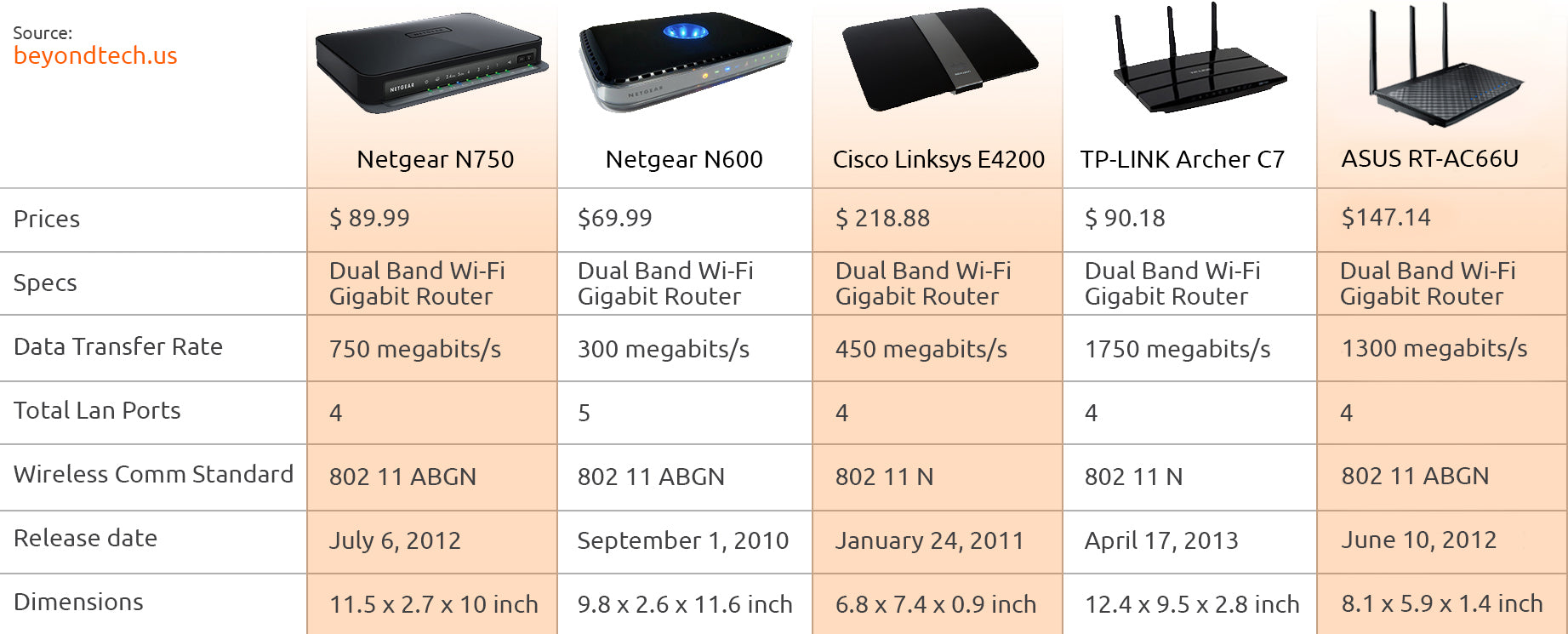
Sources for Blog Post Wi-Fi Routers for Fiber Optics:






